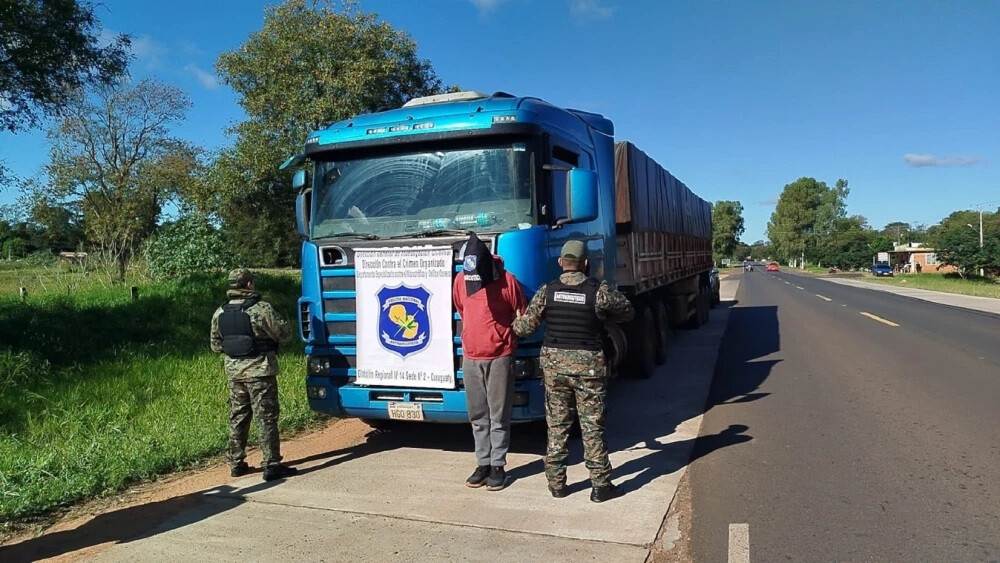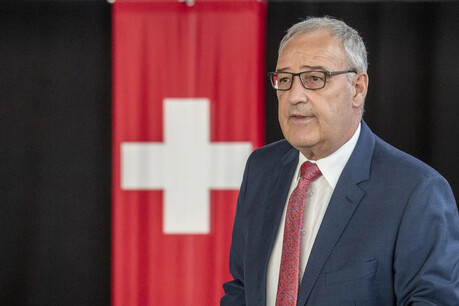
Over 3.8 tons of marijuana confiscated and driver arrested in a precise operation by anti-drug units in Capiiybary, Paraguay.
Approximately 3.8 tons of marijuana, hidden in a double-bottom truck en route to Brazil, was seized in Capiiybary, Canindeyú Department, Paraguay. The Paraguayan National Police's Anti-Drug Secretariat (SENAD) apprehended this large-scale drug shipment around 9 AM last Friday at the intersection of RD006 provincial road (at the 40km mark) and Santo Domingo Street in Capiiybary. This area is known for rampant drug cultivation and is a strategic stronghold for transporting drugs to Brazil.
The seized marijuana totaled 3,885 kg, divided into 259 rectangular bundles wrapped in transparent polyethylene, meticulously concealed within the truck's cleverly hidden double bottom. This method is a typical tactic previously used by drug trafficking organizations to hide drugs in transport vehicles. Anti-drug units, aware of these concealment methods, successfully tracked and apprehended the truck.
Arrested Driver Has Previous Drug-Related Conviction
In this operation, the driver of the drug transport truck, Daniel José Philippsen Kuhn (32, from Santa Rita, Alto Paraná, Paraguay), was arrested on the spot. Investigations revealed that Philippsen Kuhn had a prior conviction in 2022 for drug possession and unauthorized sale. This suggests he is not merely a driver but potentially deeply involved with drug trafficking organizations. SENAD plans to expand the investigation to identify any additional accomplices and the higher echelons of the drug trafficking organization.
Capiiybary: A Key Hub for Brazil's Drug Trafficking
The Capiiybary region, active with "cultivation sites" (drug hideouts) and trafficking organizations, has been identified as a critical conduit for drug flow into the Brazilian market. It is a major hub where drugs are concealed using dense forests and difficult terrain, and then transported to Brazil via small aircraft or disguised vehicles. Paraguayan authorities have designated the Capiiybary area as a top priority for drug trafficking surveillance and are continuously intensifying their crackdown. This arrest was part of these ongoing surveillance efforts.
Sophisticated Trafficking Methods and Challenges in Interdiction
Drug trafficking organizations constantly devise new transport methods to evade detection. Besides the double-bottom truck found in this case, they employ various tactics, including modifying fuel tanks, hiding drugs inside tires, and even concealing them in livestock transport vehicles. Brazil is a major consumer market for Paraguayan marijuana, and cross-border drug trafficking poses a severe threat to border security and public safety in both Paraguay and Brazil. SENAD plans to strengthen cross-border cooperation and utilize advanced equipment to more closely monitor the activities of drug trafficking organizations.
Expanding Investigation and Strengthening International Cooperation
This case is being led by Prosecutor Juan Venegas of the Curuguaty Anti-Drug Unit. The seized evidence and arrested driver have been transferred for further investigation. Paraguayan authorities believe the ultimate destination of the seized drugs is likely Brazil and plan to expand the investigation into international drug trafficking organizations in cooperation with the Brazilian Federal Police. Such international collaboration is essential for eradicating drug trafficking activities and ensuring community safety. Paraguay and Brazil have previously achieved success through drug-related intelligence sharing and joint operations, and close cooperation is expected to continue.
This incident demonstrates Paraguay's ongoing efforts in drug interdiction. While drug trafficking organizations are using increasingly sophisticated and audacious methods, Paraguayan authorities recognize the strategic importance of border regions and are strengthening surveillance and actively responding. Efforts to create a drug-free society are expected to continue through international cooperation and sustained enforcement.
[Copyright (c) Global Economic Times. All Rights Reserved.]






























